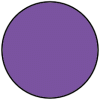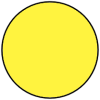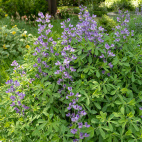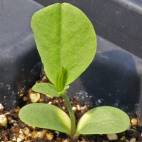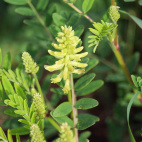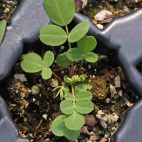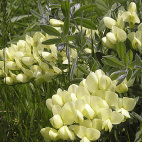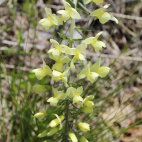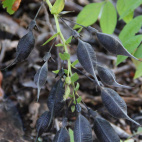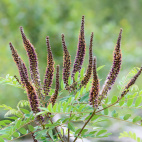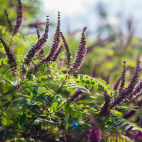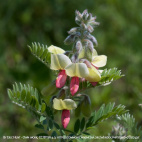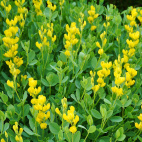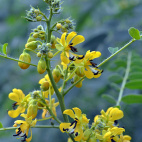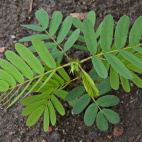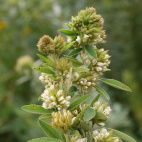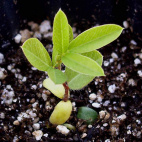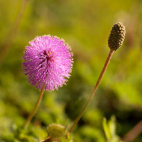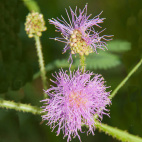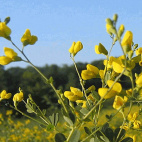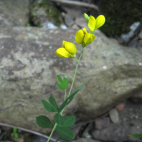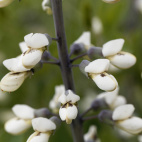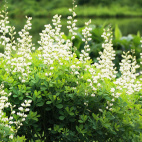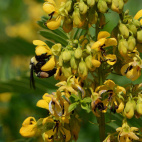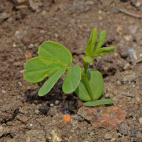Color
Availability
USDA Zone
Region
Type
Duration
Season
Germination
Soil
Sunlight
Height
Use
Narrow Your Search
Color
Availability
USDA Zone
Region
Type
Duration
Season
Germination
Soil
Sunlight
Height
Use
Wildflower Seeds - Southeast Region
-
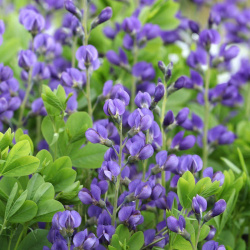 On Sale!
Blue Wild Indigo Seeds
Baptisia australis
Though slow to establish, these brilliant blue and purple blossoms are worth the wait. The bushy perennial can persist for decades and is a source for indigo dye.Quick View$3.48 Pkt - $15.95 / Oz
On Sale!
Blue Wild Indigo Seeds
Baptisia australis
Though slow to establish, these brilliant blue and purple blossoms are worth the wait. The bushy perennial can persist for decades and is a source for indigo dye.Quick View$3.48 Pkt - $15.95 / Oz -
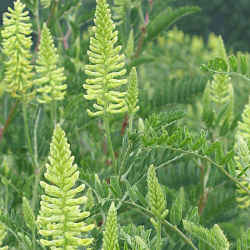 On Sale!
Canadian Milk Vetch Seeds
Astragalus canadensis
Huge plumes of fern-like foliage and spiky flowers set this unusual wildflower apart. Vigorous growth and adaptability make this plant a good choice for erosion control or prairie restoration.Quick View$3.25 Pkt - $7.92 / Oz
On Sale!
Canadian Milk Vetch Seeds
Astragalus canadensis
Huge plumes of fern-like foliage and spiky flowers set this unusual wildflower apart. Vigorous growth and adaptability make this plant a good choice for erosion control or prairie restoration.Quick View$3.25 Pkt - $7.92 / Oz -
 Cream Wild Indigo Seeds
Baptisia leucophaea
One of the first plants to bloom on the spring prairie, these abundant creamy flowers add elegance to any planting. These take a while to establish from seed but will persist for decades.Quick View$3.75 Pkt - $108.00 / Oz
Cream Wild Indigo Seeds
Baptisia leucophaea
One of the first plants to bloom on the spring prairie, these abundant creamy flowers add elegance to any planting. These take a while to establish from seed but will persist for decades.Quick View$3.75 Pkt - $108.00 / Oz -
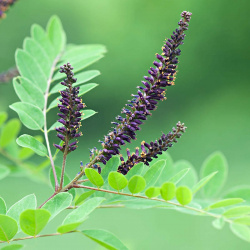 On Sale!
False Indigo Seeds
Amorpha fruticosa
Growing naturally in prairie meadows, False Indigo thrives across most of the United States. This native shrub also has attractive, sweet-scented foliage. Cannot ship to WA State.Quick View$3.48 Pkt - $14.49 / Oz
On Sale!
False Indigo Seeds
Amorpha fruticosa
Growing naturally in prairie meadows, False Indigo thrives across most of the United States. This native shrub also has attractive, sweet-scented foliage. Cannot ship to WA State.Quick View$3.48 Pkt - $14.49 / Oz -
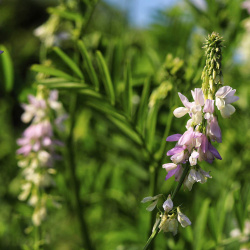 Goat's Rue Seeds
Tephrosia virginiana
This native wildflower has attractive leguminous foliage accented with rather large yellow and pink pea blossoms. This perennial is a unique plant and would make a great addition to a specimen garden or a prairie planting.Quick Viewx
Goat's Rue Seeds
Tephrosia virginiana
This native wildflower has attractive leguminous foliage accented with rather large yellow and pink pea blossoms. This perennial is a unique plant and would make a great addition to a specimen garden or a prairie planting.Quick ViewxGoat's Rue Seeds
Tephrosia virginiana
This native wildflower has attractive leguminous foliage accented with rather large yellow and pink pea blossoms. This perennial is a unique plant and would make a great addition to a specimen garden or a prairie planting.
$3.48 Pkt - $40.00 / Oz -
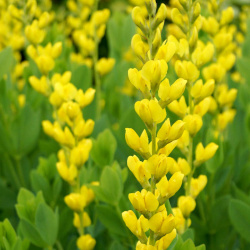 Out Of Stock
Large Yellow Wild Indigo Seeds
Baptisia sphaerocarpa
Bursting with bright yellow blossoms, this robust perennial grows larger each year. It is very long-lived and drought resistant.Quick View$3.48 Pkt - $50.00 / Oz
Out Of Stock
Large Yellow Wild Indigo Seeds
Baptisia sphaerocarpa
Bursting with bright yellow blossoms, this robust perennial grows larger each year. It is very long-lived and drought resistant.Quick View$3.48 Pkt - $50.00 / Oz -
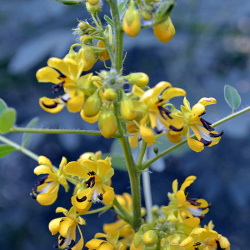 Maryland Senna Seeds
Senna marilandica
Dramatic yellow blossoms adorn this legume, which is native to the Eastern US. Also known as Cassia, this perennial has a wide variety of uses ranging from cosmetic preparations to folk medicine, to prairie restorations.Quick Viewx
Maryland Senna Seeds
Senna marilandica
Dramatic yellow blossoms adorn this legume, which is native to the Eastern US. Also known as Cassia, this perennial has a wide variety of uses ranging from cosmetic preparations to folk medicine, to prairie restorations.Quick ViewxMaryland Senna Seeds
Senna marilandica
Dramatic yellow blossoms adorn this legume, which is native to the Eastern US. Also known as Cassia, this perennial has a wide variety of uses ranging from cosmetic preparations to folk medicine, to prairie restorations.
$3.48 Pkt - $11.03 / Oz -
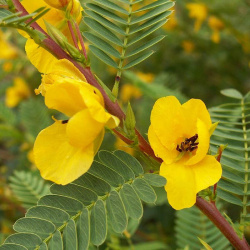 Partridge Pea Seeds
Chamaecrista fasciculata
These sunny yellow blooms show off all summer long. This annual plant likes sandy soil, and the seeds are attractive to partridges, bobwhite, and quail.Quick View$3.48 Pkt - $6.67 / Oz
Partridge Pea Seeds
Chamaecrista fasciculata
These sunny yellow blooms show off all summer long. This annual plant likes sandy soil, and the seeds are attractive to partridges, bobwhite, and quail.Quick View$3.48 Pkt - $6.67 / Oz -
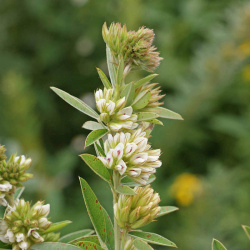 On Sale!
Round Headed Bush Clover Seeds
Lespedeza capitata
These creamy white flowers are a nice addition to a native wildflower planting because they are a favorite of small animals and birds, as well as bees and butterflies. This native is a perennial legume and helps build nutrients in the prairie soil.Quick Viewx
On Sale!
Round Headed Bush Clover Seeds
Lespedeza capitata
These creamy white flowers are a nice addition to a native wildflower planting because they are a favorite of small animals and birds, as well as bees and butterflies. This native is a perennial legume and helps build nutrients in the prairie soil.Quick ViewxRound Headed Bush Clover Seeds
Lespedeza capitata
These creamy white flowers are a nice addition to a native wildflower planting because they are a favorite of small animals and birds, as well as bees and butterflies. This native is a perennial legume and helps build nutrients in the prairie soil.
$3.48 Pkt - $14.49 / Oz -
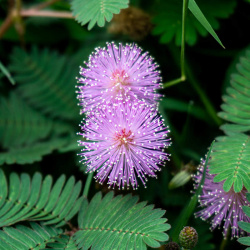 Sensitive Briar Seeds
Mimosa nuttallii
Actually a legume, this plant's name comes from its characteristic wilting when touched or shaken by the wind. This unusual native plant produces spiky pink balls on prickly stems.Quick Viewx
Sensitive Briar Seeds
Mimosa nuttallii
Actually a legume, this plant's name comes from its characteristic wilting when touched or shaken by the wind. This unusual native plant produces spiky pink balls on prickly stems.Quick ViewxSensitive Briar Seeds
Mimosa nuttallii
Actually a legume, this plant's name comes from its characteristic wilting when touched or shaken by the wind. This unusual native plant produces spiky pink balls on prickly stems.
$3.25 Pkt - $30.00 / Oz -
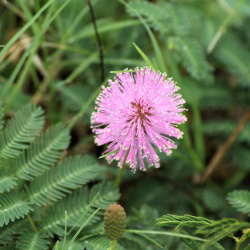 Sensitive Plant Seeds
Schrankia uncinata
Best known for its unusual habit of folding up its leaves when touched, this intriguing plant would be a fun science experiment for children. This native wildflower also bears small pink flower balls when mature.Quick View$3.75 Pkt - $26.00 / Oz
Sensitive Plant Seeds
Schrankia uncinata
Best known for its unusual habit of folding up its leaves when touched, this intriguing plant would be a fun science experiment for children. This native wildflower also bears small pink flower balls when mature.Quick View$3.75 Pkt - $26.00 / Oz -
 Small Yellow Wild Indigo Seeds
Baptisia tinctoria
These sunny, yellow flowers grow on drought-resistant, shrub-like plants. These long-lived perennials are perfect for native landscaping.Quick View$3.75 Pkt - $60.00 / Oz
Small Yellow Wild Indigo Seeds
Baptisia tinctoria
These sunny, yellow flowers grow on drought-resistant, shrub-like plants. These long-lived perennials are perfect for native landscaping.Quick View$3.75 Pkt - $60.00 / Oz -
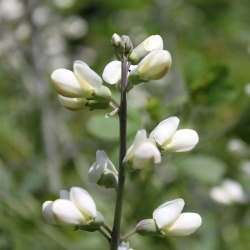 White Wild Indigo Seeds
Baptisia alba
Attractive foliage and vase-like shape add a refined touch to the native landscape. The lovely white blooms are very drought resistant and will bring pollinators to your garden.Quick View$3.75 Pkt - $18.26 / Oz
White Wild Indigo Seeds
Baptisia alba
Attractive foliage and vase-like shape add a refined touch to the native landscape. The lovely white blooms are very drought resistant and will bring pollinators to your garden.Quick View$3.75 Pkt - $18.26 / Oz -
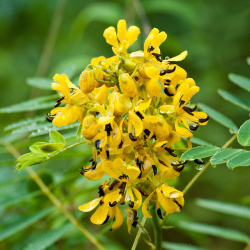 Wild Senna Seeds
Senna hebecarpa
This tall leguminous perennial brightens the landscape with sunny yellow flowers. Also known as Cassia, this native plant has a wide variety of uses ranging from cosmetic preparations to folk medicine, to prairie plantings.Quick View$3.48 Pkt - $9.88 / Oz
Wild Senna Seeds
Senna hebecarpa
This tall leguminous perennial brightens the landscape with sunny yellow flowers. Also known as Cassia, this native plant has a wide variety of uses ranging from cosmetic preparations to folk medicine, to prairie plantings.Quick View$3.48 Pkt - $9.88 / Oz

